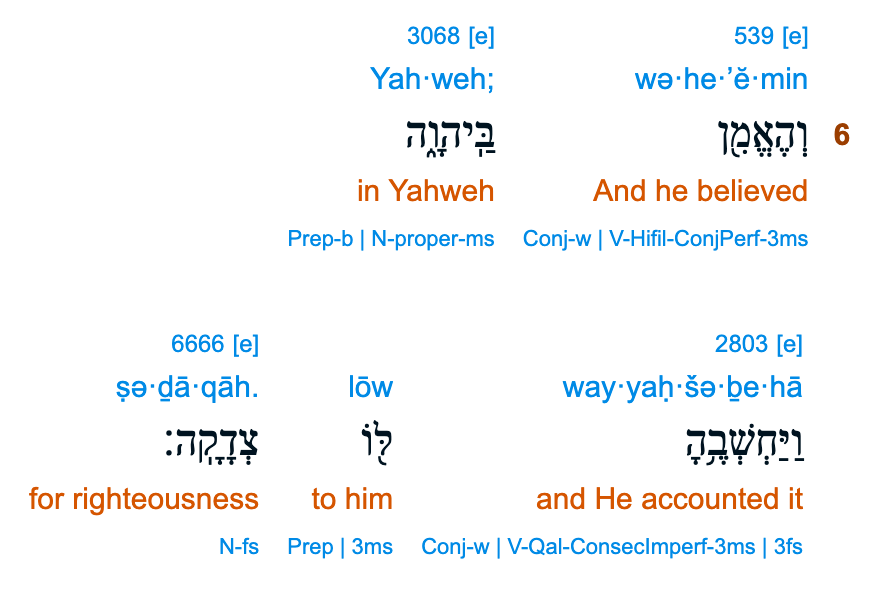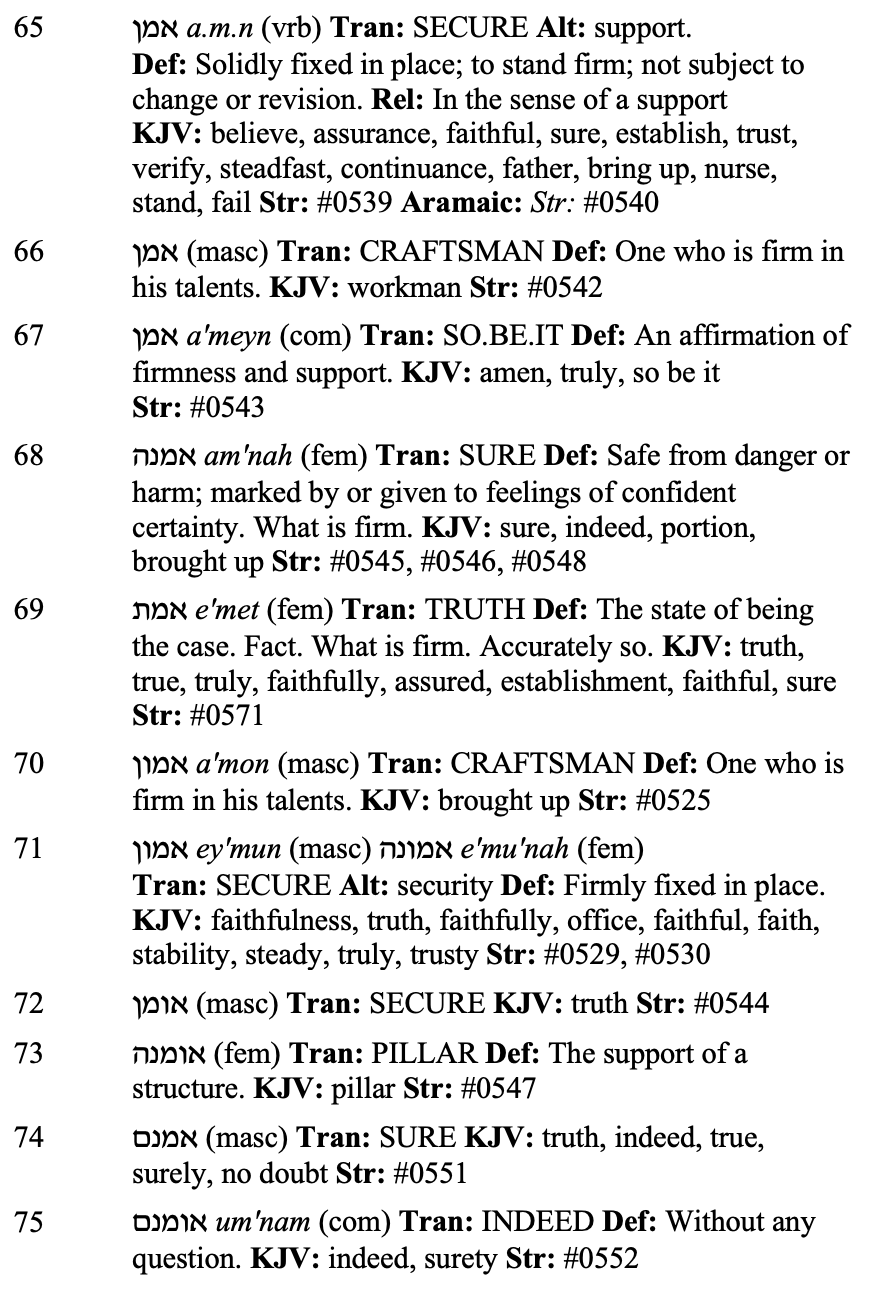If you want to go beyond Strong’s Dictionary when defining Hebrew words, you'll need a lexicon that identifies a word’s root and all the words that are derived from it. Most Hebrew lexicons, however, require you to know at least the Hebrew alphabet in order to locate a word.
I designed this lexicon specifically for Bible students like you who do not know Hebrew. It allows for in-depth Hebrew word studies without needing to recognize Hebrew letters or know the grammar.
Step 1: Start with BibleHub
We’ll begin by looking at the word “believed” in Genesis 15:6 using BibleHub’s interlinear tool:

The word translated as “believed” is Strong’s #539.
Step 2: Search in the Lexicon
In the back of the lexicon, you'll find an index that allows you to convert Strong’s numbers into the equivalent lexicon entries. When you find the number “539” you will see that the equivalent lexicon number is “65.” Next, look for entry number "65" within the lexicon.

This brings us to the verb a–m–n (אָמַן), which I define as "secure." Notice how “secure” is a much more concrete term than “believe.” It suggests an action—a state of being firm, supported, or upheld—rather than an abstract thought process that the English word believe implies.
Step 3: Discover the Root Family
To deepen our understanding of this verb, we will need to look at its parent root. Most Hebrew words are built on three-letter roots, but those, in turn, come from two-letter parent roots. The verb a–m–n comes from the two-letter root AM.

Take a moment to read through the entry for this parent root.
Step 4: Explore Related Words
Below the parent root entry, you'll see all the related roots and words that are derived from it. As you read through them, look for a shared theme or function that connects them.

Among the three-letter roots derived from AM are:
- AMM
- AWM
- AYM
- AMN

The final one, AMN, is the root for the verb we're studying. Beneath that, you’ll see all the words that stem from this same root.

Notice how all these words share the underlying idea of being firm, supported, or secure. This is the concrete foundation behind the abstract English translation “believe.”
Key Takeaway
By following the root trail and comparing related words, you move from abstract English ideas to the original, concrete concepts behind the Hebrew. This approach reveals how biblical words functioned in the minds of the ancient Hebrews.
Note that the following video is for the older version of this Lexicon, the Ancient Hebrew Lexicon of the Bible, but the content still applies to the new version, Benner's Lexicon of Biblical Hebrew.


